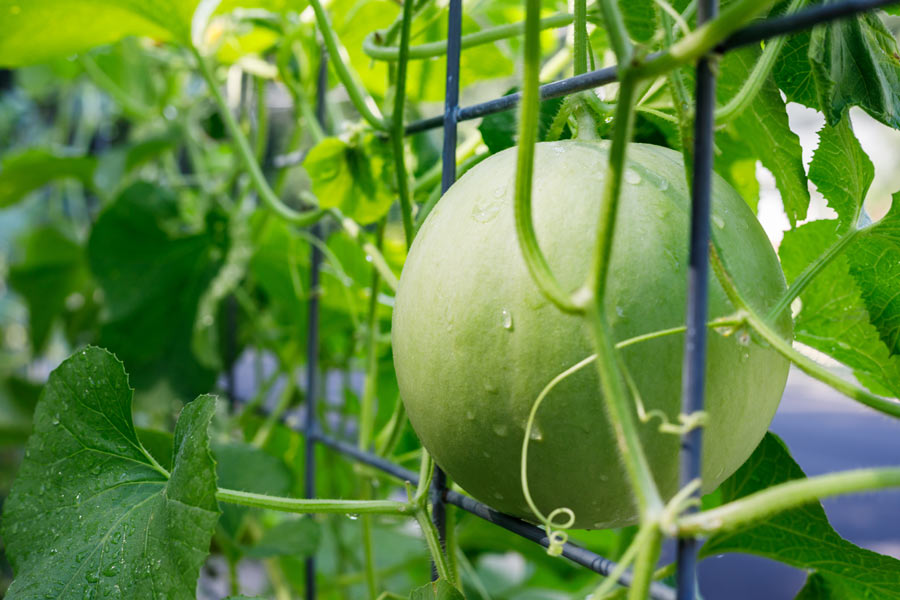How to harvest melons and winter squash
Published at
I grew up in a large family in eastern Idaho. Even though our garden was large, growing melons was not something we ever did. So, my first watermelon-growing experience was after I left home. I remember it vividly. I was excited to see the fruit form and then I waited for what seemed like forever. I finally decided it was time to harvest the melon — big mistake. It was not ripe and, unlike tomatoes, once it is picked it will not ripen any more.
Since that first epic failure I have successfully grown and harvested many sweet watermelons.
Ripening basics
Some fruits will continue to sweeten (ripen) after harvest, and others will not. Those that continue to ripen after harvest are called climacteric and include tomatoes, apples, peaches, cantaloupe, and bananas. Those that do not sweeten after harvest are called non-climacteric and include grapes, raspberries, watermelon, squash, pumpkins, and strawberries.
Even the climacteric fruits should be harvested close to ripe.
Squash and Pumpkins—non-climacteric
There are three things to look for when harvesting winter squash and pumpkins:
- Mature color—most winter squash and pumpkins will change color as they ripen.
- Woody stem—the pedicel (flower stem) will change to a tan color and become woody on the mature fruit.
- Tough skin—The skin of mature melons should not leave a dent when pressed with a thumbnail.
- Winter squash and pumpkins should be stored at 50 – 60F with low humidity.
Cantaloupe—climacteric
Cantaloupes are probably the easiest melons to harvest at the right stage, but they can quickly become overripe.
- Skin color—the skin between the netting will turn from green to yellow as it approaches maturity.
- Soft spot—the blossom end of the fruit should give slightly to pressure
- Stem slip—with a slight pressure the stem should separate from the melon. If the stem separates on its own, the melon will likely be overripe. Since they are climacteric, a partial slip melon will still sweeten up.
- Aroma—cantaloupe should have a strong muskmelon smell when fully ripe.
Ripe cantaloupe should be stored cold (32 – 40F) and moist. If it is not fully ripe then it should be stored cool (40 – 50F) and moist.

Honeydew—mostly non-climacteric
- Color—the skin of honeydew will change from pale green to yellowish white.
- Aroma—ripe honeydew melons will give off a light, pleasant aroma.
- Soft spot—the blossom end of the fruit will give slightly to pressure.
Honeydew melons will store best at 50F in high humidity.
Watermelon—non-climacteric
- Spoon and tendril—there is a leaf, spoon-shaped stipule, and a tendril that are attached to the vine where the watermelon is attached. While these may dry before the watermelon is ready, they do tell you when to look for other indicators.
- Loss of sheen—the sheen of the skin will dull as the watermelon ripens.
- Ground spot—the ground spot will turn from a pale green to a buttery yellow color.
Watermelons can be stored for a couple of weeks at 50 – 60 degrees but should be refrigerated after opening. An after-harvest indicator is the color of the sap that oozes from the cut stem. In a ripe melon it will be a caramel color, but since it has already been harvested, this is more of a peace-of-mind indicator.
Enjoy your melons.

In the Garden is sponsored by ProPeat, which is dedicated to delivering solutions for any of your professional fertilization needs. Whether you need to reduce the harm to soils and the environment, or you're interested in the latest nitrogen, carbon and biochemical technologies, ProPeat is the perfect fit.


